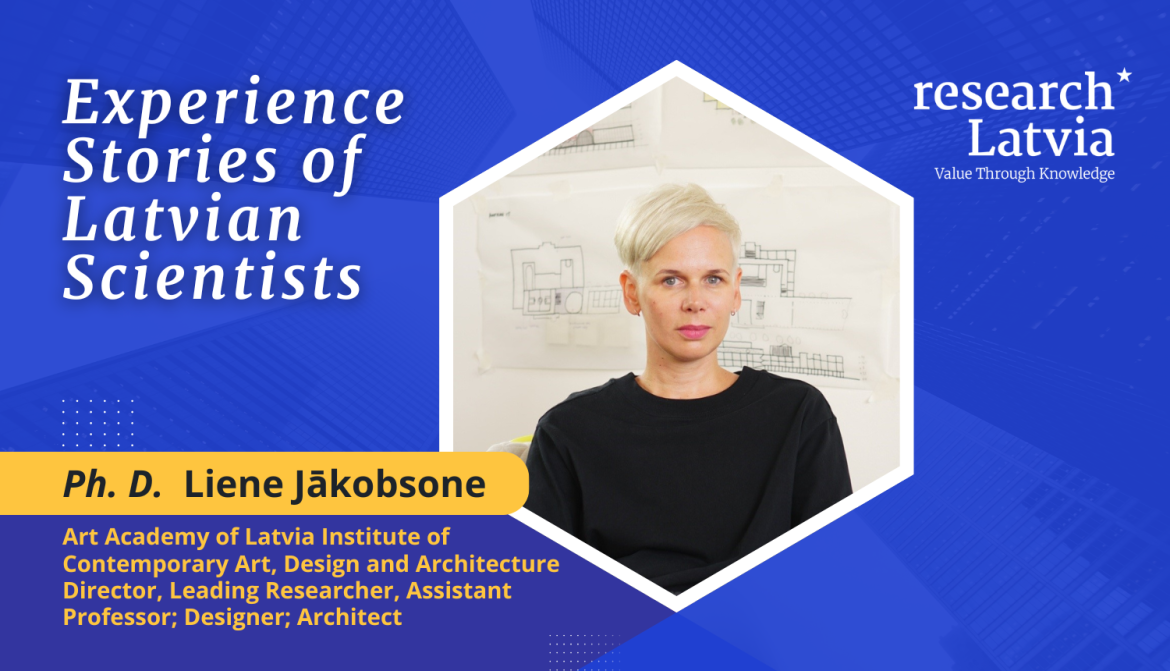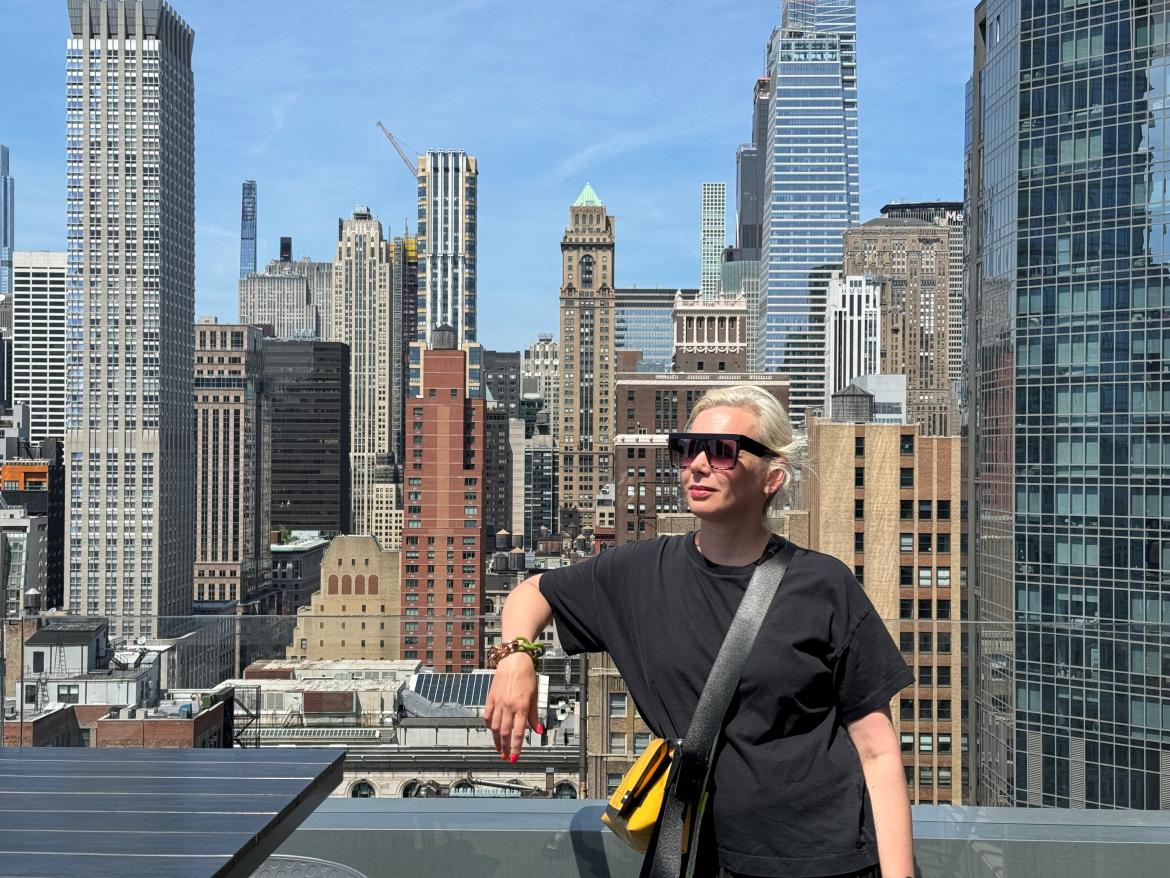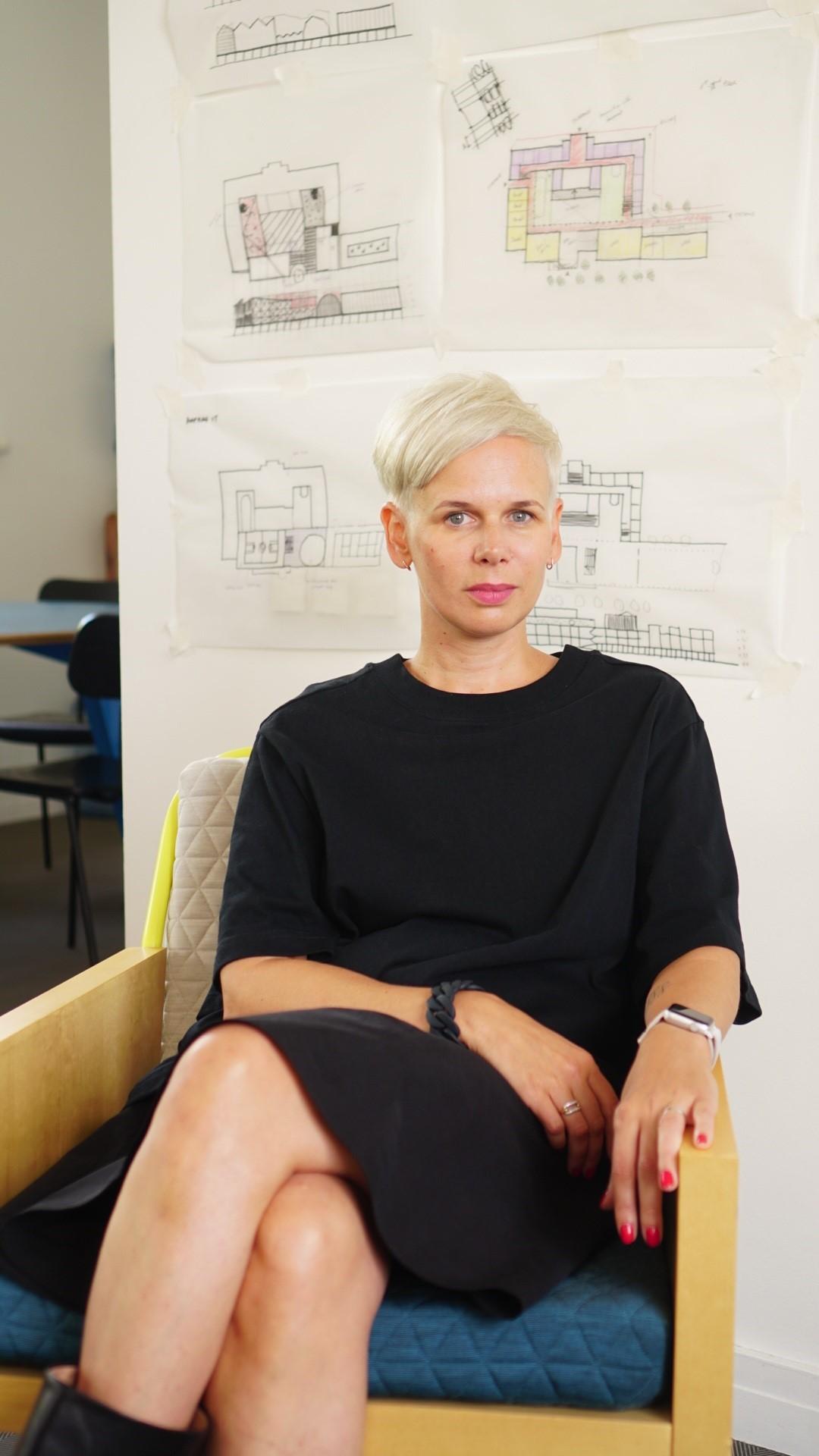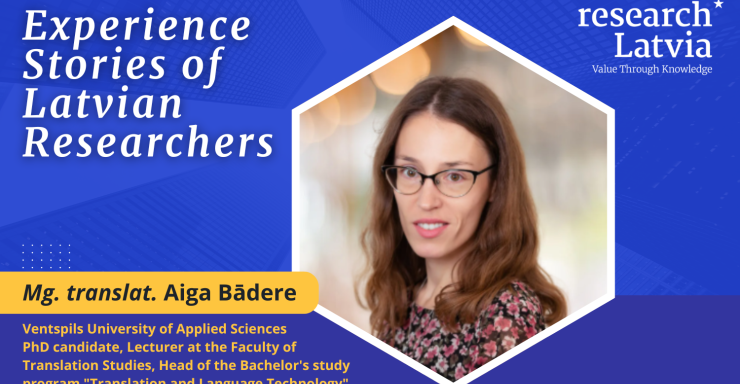Ph. D. Liene Jākobsone is the Director of the Institute of Contemporary Art, Design, and Architecture (LMDA) at the Art Academy of Latvia (AAL), a Leading Researcher, and an Associate Professor. Her research interests include design theory, critical design, and architectural methodology. Alongside her academic work, L. Jākobsone is also a practicing designer and architect, integrating research with real-world projects. The humanities doctorate also works as a curator, including leading the Latvian pavilion at the prestigious Venice Architecture Biennale. The science communication platform researchLatvia, created by the Ministry of Education and Science, speaks with Ph. D. Liene Jākobsone about her research in critical design, public perception of innovation, and the role of design not only in aesthetics but also in social processes.
The doctorate she obtained in 2022 is a testament to her determined involvement in academia. In her dissertation, "Critical Design for Change: The Role of Critical Design in Promoting Sustainability," Ph. D. L. Jākobsone analyzed the origins, development, and characteristics of critical design, integrating it into the theory of design for change. The methods and approaches identified in her research can be applied more broadly in design practice, fostering more conscious and socially responsible design processes. In Jākobsone’s view, critical design serves as both a way of thinking and an approach to action that can inspire ecologically and socially sustainable change. “I can’t pinpoint the exact moment I entered science, but I have never distanced myself from education,” she says.
For L. Jākobsone, research was not a coincidence but a conscious choice – to seek new approaches and generate new knowledge.

For Liene Jākobsone, science and the joy of discovery have been an inherent part of life since childhood. “I have always wanted to learn and discover something new,” she admits. Although she initially studied painting, she quickly realized that she was more drawn to analytical approaches and rational thinking than to creating art itself. “Art is often an emotional process, but I have always had a pronounced rational side. Seeking intellectual challenges, I turned to architecture, which combines logic and creativity,” she explains.
Her desire for academic growth and scientific work also stems from her family – her parents were researchers in chemistry. “My father had a doctoral degree, and I saw from an early age how important that was to him.
It instilled in me the conviction that science is a valuable and prestigious field where I also wanted to realize myself,” she recalls. This inner motivation not only drove her to earn a doctoral degree but also to continue her research, integrating design, architecture, and the social sciences.
Thinking Outside the Box: How Design Becomes a Mirror of Society
Currently, humanities Ph. D. Liene Jākobsone is the only specialist in this field in Latvia. “Alongside my research, I started giving lectures at the academy, mainly on my research topic – critical design and speculative design practice. Since these topics had not been studied in Latvia before, I had to create the lecture course myself. I discovered critical design while traveling, visiting museums and exhibitions, and establishing connections with various people. By following contemporary trends, I noticed this new, innovative approach emerging and developing globally.”
At present, there is almost no academic literature on contemporary design in Latvian – at least not to the extent needed for an academic discourse to form. “That’s why my entire doctoral research was based on international literature, contacts, and global practices, introducing many terms in Latvian for the first time. This involved not only translating new concepts but also a great responsibility – I realized that as the only specialist in this field, I would influence how this terminology becomes established in academic and professional circles.”

As the researcher explains, the word design, from its etymological roots in English, derived from the Latin designare, means planning and structuring in the broadest sense. It is not only a visual or aesthetic process but also a structured approach to solving any situation.
L. Jākobsone further clarifies: “In design theory, I always emphasize to students that design is not just about objects – it is about thinking and action. In reality, all of us are constantly engaged in design – we plan, make decisions, and implement ideas to achieve desired results. Design is not random activity but a conscious process aimed at transforming existing conditions.”
"Critical design is not focused on creating new products but on speculating about alternative possibilities that could exist in the future. It is a thought experiment that materializes in visual form and encourages society to rethink existing structures."
Her research explores how design can serve as not only an aesthetic tool but also a socially significant one. “People often associate design with expensive and stylish things, but in reality, design encompasses everything created by humans – from everyday objects to complex systems and solutions,” explains the LMDA researcher.
A Global Perspective: Latvian Researchers at the Heart of International Projects
AAL LMDA researcher continues her scientific work in both architecture and design, collaborating with international partner institutions. She emphasizes that research is not just an academic process but also a way to influence society and its way of thinking: “The humanities and social sciences have long been the driving force behind civilization. We must consider how to allocate adequate funding to these fields, as they shape the society of the future.”
“During my doctoral studies, I was already oriented toward the international environment – I have always felt that Latvia's scale is too narrow. Both in education and practice, I have sought broader perspectives, actively building connections and collaborating with international partners. That is why, even during my studies, I got involved in an AAL project, working alongside foreign colleagues,” says the researcher.
Currently, Liene Jākobsone and her team are working on several studies simultaneously. Interdisciplinary teams provide a broader perspective, but they often face challenges – different fields tend to interpret fundamental concepts and approaches differently. At times, the viewpoints are vastly diverse, and it often takes time to find common ground, especially when the disciplines are far apart. However, this very interaction generates new ideas and innovations that would not be possible within a single field alone.

Liene Jākobsone actively participates in international research projects where design is explored as a tool for changing public perception. One of her studies focuses on the relationship between architecture and power in totalitarian states – how buildings and urban planning influence public perception and whether architecture can serve as a political instrument. For example, the Latvian Academy of Sciences building and similar structures in Poland (such as the Palace of Culture and Science in Warsaw, the tallest building in Poland and one of the tallest in Europe) and Romania are analyzed to understand how these buildings are perceived today and whether they still carry historical symbols of power.
Another project examines forgotten agroecological practices and their potential revival in modern urbanization. The research team analyzed how traditional food cultivation and exchange methods in Eastern Europe and South America could serve as sustainable alternatives to industrial food production. “In our region, ancient food preservation and exchange traditions have survived, while elsewhere in the world, they are being revived as innovative practices,” L. Jākobsone explains.
A more practical example is collaboration with Riga Technical University, where an application is being developed to visualize the insulation of Soviet-era apartment blocks, helping residents improve energy efficiency. This project demonstrates how design can serve as a bridge between science and societal behavior change.
Research as an Intellectual Provocation
L. Jākobsone believes that research requires independence and perseverance: “A doctoral program is a process that demands endurance and sustained focus. Working in the humanities requires strong motivation and the ability to work independently. A researcher must seek out, delve into, and analyze information on their own.” She also encourages aspiring researchers to embrace challenges: “If someone wants to become more open-minded and understand how the world works, research is a fascinating process. You need to be communicative, proactive, constantly seek funding, and prove the value of your research.”
Critically minded designers create speculative solutions that serve as a kind of social prototype. These solutions are not intended for mass production but rather explore potential social scenarios in which such products could exist. In this way, design becomes a tool for modeling alternative realities and challenging existing norms.

These conceptual works often resemble contemporary art objects – they are not meant for production but instead encourage society to think, reconsider existing paradigms, and question the future. It is a form of materialized intellectual provocation: using traditional design techniques, realistic artifacts are created to spark imagination about a world where such products might exist.
This approach often serves as a critique of the very industry that designers help shape. It is a way to explore, through design, what changes are possible within the context of existing resources and technologies. “Our world continuously repeats itself – both in physical structures and through habits and skills – but in reality, value judgments about what is beautiful or ugly, good or bad, are socially constructed. They are not objective, and that is what makes design so fascinating – the ability to think about it not only technically but also at a humanistic and philosophical level,” says L. Jākobsone.
The significance of the humanities is immense – if only someone listens to the insights of these scholars. Technological solutions may be innovative and technically flawless, but if society does not accept them, they remain unused. Therefore, it is crucial to understand how society functions as a unified organism – what motivates people's choices, why some priorities take precedence over others.
The researcher explains: “This understanding shapes not only our living environment but also which technologies will develop and why those specific ones will be used. It is possible to change paradigms of thinking if we pay attention to the social and cultural nuances that shape our daily lives.”
The Contribution of Humanities to Societal Development
International consortia are increasingly emphasizing the contribution that a specific regional perspective can bring to global discourse. Particularly relevant today is the decolonization movement in the humanities, which analyzes the real effects of colonization and the traditional dynamics of geopolitical power – between former colonizers and colonized territories. In this context, Latvia holds a specific position, as its historical experience can also be viewed through a postcolonial lens. This provides an opportunity to critically assess how our identity is shaped and how we can influence the broader academic and cultural space.
Ph. D. Liene Jākobsone’s research work is proof of how diverse and significant the humanities are. Her work in the field of critical design not only expands Latvia’s academic environment but also creates a link between design, society, and technology, thereby helping to understand how innovations can impact our daily lives and future.
Her experience demonstrates that research is a continuous process of inquiry and collaboration, requiring courage, perseverance, and an international mindset. It is also a call to young researchers –not to be afraid to create and seek answers that can change society's way of thinking and shape a more sustainable future: "We must learn to look beyond and not be afraid to ask questions – because only in this way can we change the established order and create new opportunities."

--
About the Article Series Stories of Latvian Scientists’ Experiences
This series, developed by the Ministry of Education and Science’s communication platform researchLatvia, provides insight into the work of Latvian researchers, fostering a deeper understanding of the role of science in society and creating a dialogue between scientists and the broader public.
These stories invite both current and future researchers, as well as society, to explore Latvia’s scientific achievements and draw inspiration and motivation from the experiences of those who have dedicated their careers to scientific work. The interviews are conducted within the framework of project No. 1.1.1.1/1/24/I/001, “More Effective and Smarter Implementation and Management of Latvian Science Policy”.


